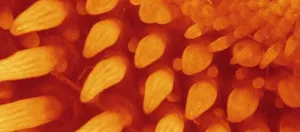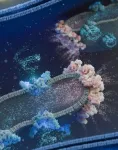(Press-News.org) Marine mammals may have a secret weapon to survive long dives – an ability to directly sense their own circulating blood-oxygen levels that most mammals lack – allowing them to stay submerged longer and resurface before hypoxia leads to drowning, researchers report. Air-breathing marine mammals have developed a range of physiological adaptations to survive in aquatic environments, including thermoregulation to endure the pressures of the deep. However, one of the most critical evolutionary challenges for diving mammals is avoiding drowning. Despite adaptations for larger oxygen storage and tolerance to low oxygen levels, these animals still risk drowning if they cannot perceive when oxygen is depleted. In general, it is thought that circulating blood oxygen is cognitively imperceptible to mammals. Instead, most mammals have evolved the ability to sense elevated carbon dioxide (CO2) as a signal for low oxygen, triggering aversive feelings like "air hunger." While the cognitive perception of CO2 serves as a crucial survival mechanism, relying on it as an indicator of low oxygen while breath-hold diving, where CO2 accumulates and is retained in the body, may not be adequate to safeguard marine mammals from drowning during extended dives. To evaluate whether marine mammals can directly perceive and respond to fluctuating oxygen levels, Chris McKnight and colleagues conducted a study on wild-caught gray seals (Halichoerus grypus) to examine how controlled variations in inhaled oxygen and carbon dioxide levels influenced their diving behavior. McKnight et al. found that dive duration was strongly correlated with blood oxygen levels but remained unaffected by CO2 levels or blood pH. According to the findings, even when exposed to CO2 concentrations 200 times higher than ambient air, the seals’ dive durations remained unchanged. However, altering oxygen levels – either doubling or halving the ambient concentration – significantly impacted how long the seals remained submerged. McKnight et al. argue that the study provides compelling evidence that gray seals possess the cognitive ability to perceive oxygen levels, allowing them to regulate their dive duration accordingly. And, given the widespread convergent evolution of diving-related adaptations among marine mammals, it is likely that similar oxygen perception mechanisms exist across other species. In a related Perspective, Lucy Hawkes and Jessica Kendall-Bar discuss the study in greater detail.
Podcast: A segment of Science's weekly podcast with Joseph McKnight, related to this research, will be available on the Science.org podcast landing page after the embargo lifts. Reporters are free to make use of the segments for broadcast purposes and/or quote from them – with appropriate attribution (i.e., cite "Science podcast"). Please note that the file itself should not be posted to any other Web site.
END
Seals can sense their own circulating blood oxygen and it keeps them from drowning
Summary author: Walter Beckwith
2025-03-20
ELSE PRESS RELEASES FROM THIS DATE:
Infants encode short-lived hippocampal memories
2025-03-20
Challenging assumptions about infant memory, a novel functional magnetic resonance imaging (fMRI) study shows that babies as young as 12 months old can encode memories, researchers report. The findings suggest that infantile amnesia – the inability to remember our first few years of life – is more likely caused by memory retrieval failures rather than an inability to form memories in the first place. Despite infancy being a period of rapid learning, memories from this time do not persist into later childhood or adulthood. In ...
Mountain uplift and dynamic topography shapes biodiversity over deep time
2025-03-20
Rising mountains do more than reshape the landscape – they also drive evolutionary change, according to a new study. By simulating millions of years of tectonic uplift, researchers have uncovered a link between mountain building and biodiversity, shedding light on how Earth’s dynamic topography shapes biodiversity over deep time. Mountain ranges are widely recognized as global hotspots of terrestrial biodiversity yet only cover a relatively small proportion of the Earth’s surface, suggesting a strong connection between topographic evolution and species diversity. Mountainous terrain can promote speciation by isolating populations, ...
Majority of carbon sequestered on land is locked in nonliving carbon reservoirs
2025-03-20
Challenging long-held assumptions about global terrestrial carbon storage, a new study finds that the majority of carbon dioxide (CO2) absorbed by ecosystems has been locked away in dead plant material, soils, and sediments, rather than living biomass, researchers report. These new insights, which suggest that terrestrial carbon stocks are more resilient and stable than previously appreciated, are crucial for shaping future climate mitigation strategies and optimizing carbon sequestration efforts. Recent studies have shown that terrestrial carbon stocks are increasing, offsetting ...
From dinosaurs to birds: the origins of feather formation
2025-03-20
Feathers are among the most complex cutaneous appendages in the animal kingdom. While their evolutionary origin has been widely debated, paleontological discoveries and developmental biology studies suggest that feathers evolved from simple structures known as proto-feathers. These primitive structures, composed of a single tubular filament, emerged around 200 million years ago in certain dinosaurs. Paleontologists continue to discuss the possibility of their even earlier presence in the common ancestor of dinosaurs and pterosaurs (the first flying vertebrates with membranous wings) around 240 million years ago.
Proto-feathers are ...
Why don’t we remember being a baby? New study provides clues
2025-03-20
Though we learn so much during our first years of life, we can’t, as adults, remember specific events from that time. Researchers have long believed we don’t hold onto these experiences because the part of the brain responsible for saving memories — the hippocampus — is still developing well into adolescence and just can’t encode memories in our earliest years. But new Yale research finds evidence that’s not the case.
In a study, Yale researchers showed infants ...
The cell’s powerhouses: Molecular machines enable efficient energy production
2025-03-20
Mitochondria are the powerhouses in our cells, producing the energy for all vital processes. Using cryo-electron tomography, researchers at the University of Basel, Switzerland, have now gained insight into the architecture of mitochondria at unprecedented resolution. They discovered that the proteins responsible for energy generation assemble into large “supercomplexes”, which play a crucial role in providing the cell’s energy.
Most living organisms on our planet-whether plants, animals, or ...
Most of the carbon sequestered on land is stored in soil and water
2025-03-20
Recent studies have shown that carbon stocks in terrestrial ecosystems are increasing, mitigating around 30% of the CO2 emissions linked to human activities. The overall value of carbon sinks on the earth's surface is fairly well known—as it can be deduced from the planet's total carbon balance anthropogenic emissions, the accumulation of carbon in the atmosphere and the ocean sinks—yet, researchers know very little about carbon distribution between the various terrestrial pools: living vegetation—mainly forests—and nonliving carbon pools—soil organic matter, sediments at the bottom of lakes and rivers, wetlands, ...
New US Academic Alliance for the IPCC opens critical nomination access
2025-03-20
WASHINGTON — The American Geophysical Union and the U.S. Academic Alliance for the IPCC today open calls for U.S. researchers to self-nominate as experts, authors and review editors for the Intergovernmental Panel on Climate Change Seventh Assessment Report through a new application portal. The IPCC nomination period opened in early March and will close in mid-April.
USAA-IPCC is a newly established network of U.S. academic institutions registered as observers with the IPCC. Both observer organizations and governments may nominate experts for ...
Breakthrough molecular movie reveals DNA’s unzipping mechanism with implications for viral and cancer treatments
2025-03-20
Scientists at the University of Leicester have captured the first detailed “molecular movie” showing DNA being unzipped at the atomic level – revealing how cells begin the crucial process of copying their genetic material.
The groundbreaking discovery, published in the prestigious journal Nature, could have far-reaching implications, helping us to understand how certain viruses and cancers replicate.
Using cutting edge cryo-electron microscopy, the team of scientists were able to visualise a helicase enzyme (nature’s DNA unzipping machine) in the process of unwinding DNA. DNA helicases are essential during DNA replication because ...
New function discovered for protein important in leukemia
2025-03-20
The protein (Exportin-1) is often found in high levels in patients with leukemia, other cancers
Protein was previously known to move materials out of a cell’s nucleus
New findings suggest protein may also stimulate transcription, which if hijacked, could contribute to abnormal cell division (cancer)
Future anti-cancer therapies that target Exportin-1’s role in transcription may be less toxic or more effective than current therapies
EVANSTON, Ill. --- Researchers from Northwestern University have stumbled upon a previously unobserved function of a protein found in the cell nuclei of all flora and fauna. In addition to exporting ...
LAST 30 PRESS RELEASES:
Eye for trouble: Automated counting for chromosome issues under the microscope
The vast majority of US rivers lack any protections from human activities, new research finds
Ultrasound-responsive in situ antigen "nanocatchers" open a new paradigm for personalized tumor immunotherapy
Environmental “superbugs” in our rivers and soils: new one health review warns of growing antimicrobial resistance crisis
Triple threat in greenhouse farming: how heavy metals, microplastics, and antibiotic resistance genes unite to challenge sustainable food production
Earthworms turn manure into a powerful tool against antibiotic resistance
AI turns water into an early warning network for hidden biological pollutants
Hidden hotspots on “green” plastics: biodegradable and conventional plastics shape very different antibiotic resistance risks in river microbiomes
Engineered biochar enzyme system clears toxic phenolic acids and restores pepper seed germination in continuous cropping soils
Retail therapy fail? Online shopping linked to stress, says study
How well-meaning allies can increase stress for marginalized people
Commercially viable biomanufacturing: designer yeast turns sugar into lucrative chemical 3-HP
Control valve discovered in gut’s plumbing system
George Mason University leads phase 2 clinical trial for pill to help maintain weight loss after GLP-1s
Hop to it: research from Shedd Aquarium tracks conch movement to set new conservation guidance
Weight loss drugs and bariatric surgery improve the body’s fat ‘balance:’ study
The Age of Fishes began with mass death
TB harnesses part of immune defense system to cause infection
Important new source of oxidation in the atmosphere found
A tug-of-war explains a decades-old question about how bacteria swim
Strengthened immune defense against cancer
Engineering the development of the pancreas
The Journal of Nuclear Medicine ahead-of-print tip sheet: Jan. 9, 2026
Mount Sinai researchers help create largest immune cell atlas of bone marrow in multiple myeloma patients
Why it is so hard to get started on an unpleasant task: Scientists identify a “motivation brake”
Body composition changes after bariatric surgery or treatment with GLP-1 receptor agonists
Targeted regulation of abortion providers laws and pregnancies conceived through fertility treatment
Press registration is now open for the 2026 ACMG Annual Clinical Genetics Meeting
Understanding sex-based differences and the role of bone morphogenetic protein signaling in Alzheimer’s disease
Breakthrough in thin-film electrolytes pushes solid oxide fuel cells forward
[Press-News.org] Seals can sense their own circulating blood oxygen and it keeps them from drowningSummary author: Walter Beckwith



